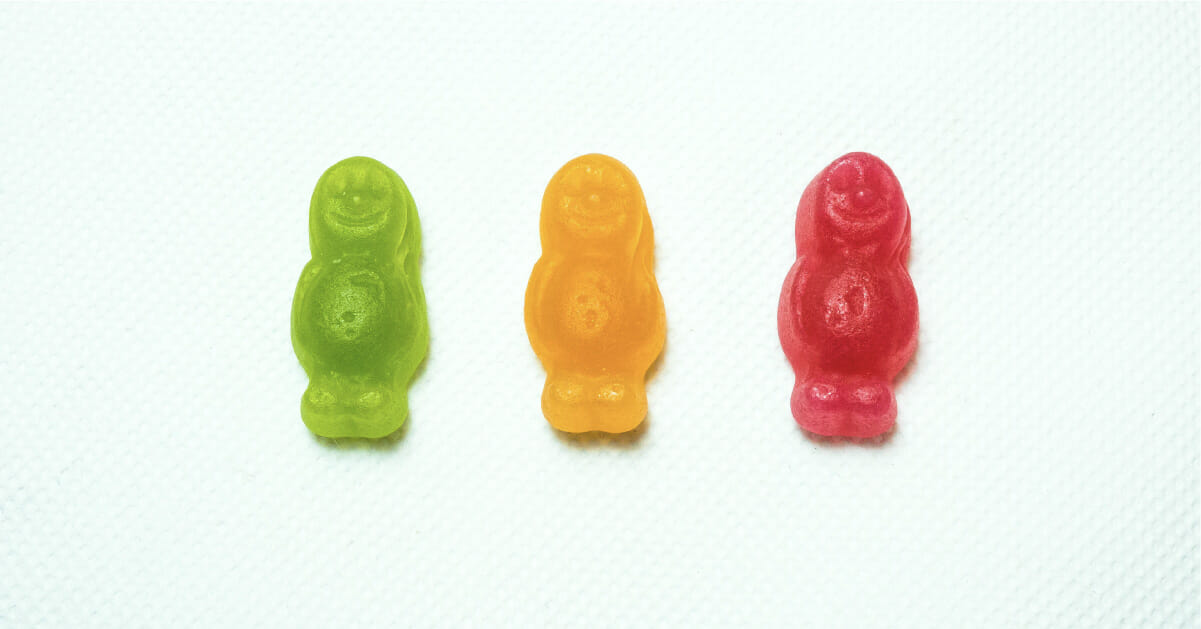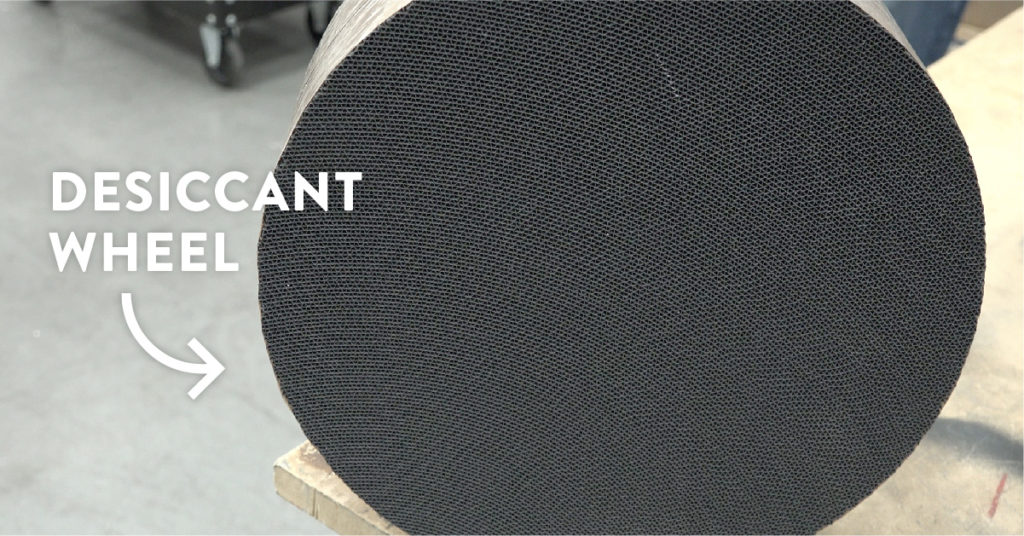Nutraceutical knowledge:
How humidity control speeds gummy production

Back in the day, gummy bears had little competition other than the occasional gummy worm. Today, thanks to the nutraceutical industry’s surge, that’s not the case.
Gummies are more popular than ever, serving as the little candy that delivers everything from CBD to your daily essential vitamins and minerals. Yes, the humble gummy has become the rock star of candy production.
But, if you’re reading this, you’re probably aware of that. What you may not know as much about is how significantly humidity problems can slow your production process, costing you time and money. So, let’s get into it.
Nutraceutical gummy production: The role of humidity
When you nail your humidity levels, you’re going to improve drying times and prevent product loss.
No matter the size of your facility or how many gummies you’re producing, a few things will always hold true when it comes to humidity.
First, and this is the big one: When you nail your humidity levels, you’re going to improve drying times and prevent product loss.
Ideally, you’re going to want to keep your relative humidity at 35 to 40% during drying. Go too high and gummies stay sticky in the package. Go too low and you create “case hardening,” which is essentially where the outside dries so fast that the inside stays a liquid. Think about it like searing a steak – but the result isn’t nearly as delicious.
When you get your relative humidity correct, gummies should dry in about 6-8 hours and deliver the perfect product. But, if it goes wrong – well, it’s a lot of product that’s essentially unsellable. And that’s an issue in a market that continues to see increasing demand.
ID the humidity source
When I go into a gummy facility, I’m looking at a multitude of variables but primarily I’m focused on the sources of moisture.
For starters, how much infiltration are we dealing with? That generally means, how often is a door to an outside room opening and closing? What type of door is it? And how well does it seal? Additionally, we look for any gaps in the wall or ceiling that may be an issue.
Identify Sources of Moisture
- How much infiltration?
- How often is the outside door being opened and closed?
- What type of door is it?
- How well does the door seal?
From there, we’re looking at what HVAC system you have in place and how many people are working in the room during a 24-hour cycle. Each can be a source of moisture that has to be addressed – especially if you’ve noticed you’re having an issue.
Another thing I’ve seen with small nutraceutical facilities producing gummies is when production is increased, they don’t have separate rooms for production and drying. That’s not an issue if you’re making one sheet of gummies. But once you’re producing, say 40 sheets – now you have a humidity problem that’s going to destroy your products.
Desiccant dehu to the rescue
First, if you’re unfamiliar, desiccant dehumidifiers are different than what most of us recognize as a dehumidifier.
Unlike their refrigerant cousins, desiccant dehumidifiers use a silica coating on a honeycomb-like wheel that captures moisture as air moves through it. For this reason, it can maintain precise humidity levels 24/7, critical in nutraceutical production.

The critical piece here is to get the sizing correct. You don’t need to come in guns-a-blazing with a desiccant dehumidifier that’s overkill for your operation. That’s why getting the variables listed above is so important. It will be much easier to effectively size your space if you know how much water you need to pull from the air.
For smaller operations, we generally recommend a Quest Trotec TR 80 or TR 110. Each is simple to adjust, portable, and can handle the capacity of smaller operations. Additionally, we find that something like the Quest 132D is a sound option.
In larger production facilities and in those that are being built from the ground up we often will go with one of the larger Quest Trotec units. We go this route not only to meet immediate needs but to allow you to scale appropriately as production increases. The more gummies – the more moisture. It sounds simple but don’t forget it.
Want more information? Don’t hesitate to reach out with your specific needs and questions. Call us at 1-877-420-1330, or email Sales@QuestClimate.com.
About the author
Dan Dettmers is an applications engineer at Quest Dehumidifiers. With more than two decades of experience, Dettmers has solved nearly every humidity issue a nutraceutical manufacturer may face.
Published on Jun 15 2020
Last Updated on Apr 10 2024
Categories: Desiccants, Humidity, HVAC Systems, Natural Supplements, Nutraceuticals
